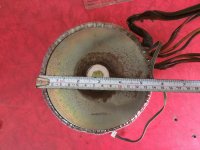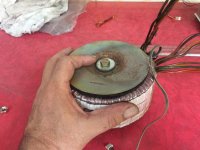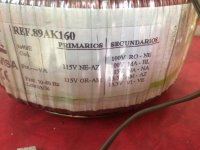Hi Silvio, my I wonder how many times I will get timed out on such a long post hehehe
OK the TIW wire is simple, have a look here
http://www.tex-e.com/product/texe_feature.htm
Maximum flux density varies with frequency and temperature together with expected losses, if you look at this site there are some useful nomographs to explain things
http://www.lodestonepacific.com/distrib/pdfs/Magnetics/Design_Application_Notes.pdf
The ExcellentIT software automatically adjusts the flux density according to the core material and frequency but lets you override it if you wish (I don't). From this it calculates the core loss. Given the maximum input voltage it also calculates the minimum primary turns at that density also taking into account dead time etc.
The diode drop is per diode, it calculates the required secondary voltage according to the rectifier configuration you enter, it's easy to see this if you play with it.
One other point don't be tempted to overfill the winding window as I noticed some comment on here, the result will be increased leakage inductance and poor regulation.
Please dont disconnect your snubber/s, you may very well destroy the rectifiers and cause significantly more power to be lost in the mosfets.
The ringing is nothing to worry about in fact its rather tame compared to what I am used to! But you may find a lot more if you look around your rectifiers, do you have snubbers there ? often the reverse recovery spike can be very damaging although its normal to also see it reflected at the primary its worth checking. The only way to totally squash ringing is to dissipate large amounts of power in the snubbers that causes increased losses everywhere, so it's a balancing act. Usually the biggest contribution to ringing is leakage reactance in the transformer, this can be minimized by carefull construction getting the best possible coupling between primary and secondary, sandwiching one windings layers in the other even if this means splitting a one layer winding into two halves etc. This is where TIW is a real winner as it improves coupling substantially.
Your CT cap is fine as reactance is a mere 2Ohms at 75Khz unless its cheap and nasty with a high ESR (Chinese Ebay).
"I bridged temporarily the current trafo but all in vein." I thought you said you didnt have a current trafo ? well anyway if you have try taking some primary current shots (current trafo secondary voltage) always instructive

Please ask if I didn't explain ExcelentIT properly, however I can only claim to have used it a few times

sometimes I revert to pencil and paper!!
Regards
John







![IMG_0443[1].JPG IMG_0443[1].JPG](https://www.diysmps.com/forums/data/attachments/5/5035-0cf35dca026727a8371a6859522b8a03.jpg)
![IMG_0441[1].JPG IMG_0441[1].JPG](https://www.diysmps.com/forums/data/attachments/5/5037-8b28ff19a4fcc83a426fb7792a7a188b.jpg)
![IMG_0421[1].jpg IMG_0421[1].jpg](https://www.diysmps.com/forums/data/attachments/5/5039-6575a72298a2bc658d085d7d0be80ece.jpg)
![IMG_0423[1].jpg IMG_0423[1].jpg](https://www.diysmps.com/forums/data/attachments/5/5040-1f3026e41a32eeecd7f21ad23bb62c34.jpg)